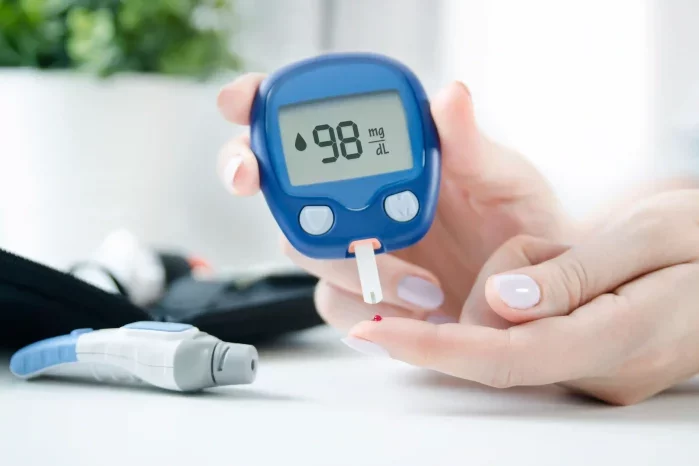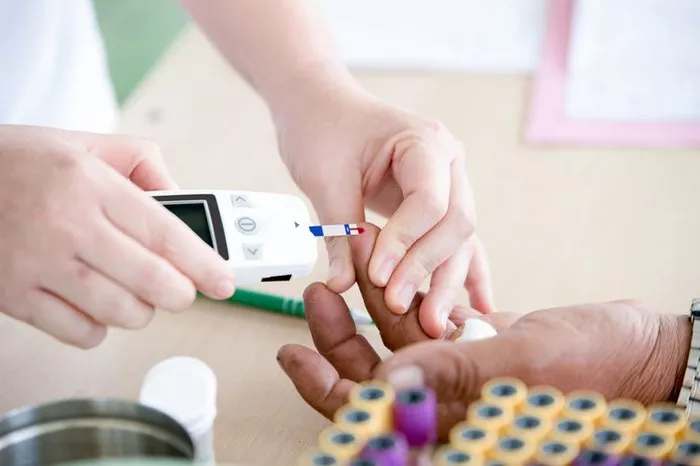Diabetes mellitus, commonly referred to as diabetes, is a chronic metabolic condition characterized by high blood sugar levels. The effective management of diabetes hinges on regular monitoring of blood glucose levels. Glucose monitoring devices have revolutionized the way individuals with diabetes manage their condition, enabling better glycemic control and reducing the risk of complications. This article delves into the mechanisms of glucose monitoring devices, exploring their types, technologies, and the science behind their functioning.
Types of Glucose Monitoring Devices
There are primarily two types of glucose monitoring devices: traditional blood glucose meters (BGMs) and continuous glucose monitoring (CGM) systems.
Blood Glucose Meters (BGMs)
Blood glucose meters are portable devices used by individuals to check their blood sugar levels at specific points in time. These devices provide a snapshot of blood glucose levels, typically using a small drop of blood obtained from a fingertip.
Components and Functioning
Lancet Device and Lancets: The lancet device houses a small, sharp needle called a lancet. The lancet is used to prick the skin, usually the fingertip, to obtain a drop of blood.
Test Strips: Test strips are crucial components of BGMs. These strips are coated with a layer of glucose oxidase or dehydrogenase enzymes. When blood is applied to the strip, the glucose in the blood reacts with these enzymes.
Meter: The meter analyzes the chemical reaction that occurs on the test strip. The reaction produces an electrical signal proportional to the glucose concentration in the blood. The meter then translates this signal into a digital readout, displaying the blood glucose level.
Continuous Glucose Monitoring (CGM) Systems
Continuous glucose monitoring systems offer a more comprehensive approach by providing real-time glucose readings throughout the day and night. These devices are particularly beneficial for individuals who need to monitor their glucose levels closely, such as those with type 1 diabetes.
Components and Functioning
Sensor: The sensor is a small, flexible device inserted just under the skin, usually on the abdomen or arm. It contains a tiny electrode that measures the glucose levels in the interstitial fluid—the fluid surrounding the cells.
Transmitter: The transmitter attaches to the sensor and wirelessly sends the glucose data to a receiver or a compatible smart device.
Receiver: The receiver is a dedicated device or a smartphone that displays the glucose readings. It provides trends, alerts, and patterns, helping users make informed decisions about their diabetes management.
Technology Behind Glucose Monitoring Devices
Enzymatic Reaction and Biosensing
The core technology behind glucose monitoring devices is based on enzymatic reactions and biosensing principles.
Glucose Oxidase-Based Sensors
Glucose oxidase is an enzyme commonly used in glucose sensors. When glucose in the blood or interstitial fluid comes into contact with glucose oxidase, it undergoes oxidation, producing hydrogen peroxide and gluconic acid. The hydrogen peroxide is then broken down by a mediator, generating an electrical signal. This signal is proportional to the glucose concentration and is converted into a digital reading by the meter or receiver.
Glucose Dehydrogenase-Based Sensors
Glucose dehydrogenase is another enzyme used in some glucose sensors. It catalyzes the oxidation of glucose to gluconolactone in the presence of a cofactor such as pyrroloquinoline quinone (PQQ). This reaction generates an electrical signal that is measured and displayed as the glucose concentration.
Electrode Technology
The electrodes in glucose sensors play a critical role in detecting the electrical signals generated by enzymatic reactions. These electrodes are typically made from materials like platinum, gold, or carbon, which facilitate the transfer of electrons during the chemical reactions. The sensitivity and accuracy of the glucose sensor depend on the quality and design of these electrodes.
Data Transmission and Analysis
In CGM systems, the data transmission and analysis technology are vital for continuous monitoring. The transmitter collects the electrical signals from the sensor and converts them into digital data. This data is then wirelessly transmitted to the receiver. Advanced algorithms in the receiver analyze the data, providing real-time glucose readings, trend graphs, and alerts for hypo- or hyperglycemia.
Advancements in Glucose Monitoring Technology
Flash Glucose Monitoring (FGM)
Flash glucose monitoring is a newer technology that combines the convenience of traditional BGMs with some features of CGMs. FGM systems use a sensor worn on the body, similar to CGM systems. However, instead of continuous data transmission, users scan the sensor with a reader or smartphone to obtain glucose readings. This method provides real-time data without the need for fingersticks, though it does not offer continuous alerts.
Non-Invasive Glucose Monitoring
Researchers are continually exploring non-invasive methods for glucose monitoring to eliminate the need for skin punctures. Some promising technologies include:
Optical Sensors: These sensors use light to measure glucose levels. Techniques such as near-infrared spectroscopy, Raman spectroscopy, and photoacoustic spectroscopy are being investigated for their potential to detect glucose non-invasively.
Transdermal Sensors: These sensors use a mild electrical current to extract interstitial fluid through the skin without puncturing it. The glucose concentration in this fluid is then measured.
Tear and Saliva Sensors: These sensors aim to measure glucose levels in bodily fluids like tears or saliva, providing a non-invasive alternative to blood glucose monitoring.
Integration with Smart Devices and Apps
Modern glucose monitoring devices increasingly integrate with smartphones and apps, enhancing user experience and data management. These integrations allow users to view their glucose data in real-time, track trends, and share information with healthcare providers. Additionally, many apps offer features like carbohydrate counting, insulin dose calculations, and reminders, aiding in comprehensive diabetes management.
Accuracy and Reliability of Glucose Monitoring Devices
Factors Affecting Accuracy
Several factors can affect the accuracy of glucose monitoring devices, including:
User Technique: Proper use of the device, such as applying the correct amount of blood to the test strip or ensuring the sensor is correctly inserted, is crucial for accurate readings.
Calibration: Some CGM systems require periodic calibration with a blood glucose meter to ensure accuracy. Failure to calibrate correctly can lead to erroneous readings.
Interference: Certain substances, such as medications or high levels of vitamin C, can interfere with the enzymatic reactions in glucose sensors, affecting accuracy.
Environmental Conditions: Extreme temperatures or humidity can impact the performance of glucose sensors and meters.
Accuracy Standards and Regulation
Glucose monitoring devices are regulated by agencies like the U.S. Food and Drug Administration (FDA) and the International Organization for Standardization (ISO). These organizations establish accuracy standards that manufacturers must meet. For example, the ISO 15197:2013 standard specifies that 95% of glucose meter readings should be within ±15 mg/dL of the reference value for glucose concentrations below 100 mg/dL and within ±15% for concentrations above 100 mg/dL.
Benefits and Limitations of Glucose Monitoring Devices
Benefits
Improved Glycemic Control: Regular glucose monitoring helps individuals make informed decisions about their diet, exercise, and medication, leading to better glycemic control.
Early Detection of Hypo- and Hyperglycemia: Continuous monitoring systems can alert users to dangerous blood sugar levels, allowing for timely intervention.
Enhanced Quality of Life: The convenience and ease of use of modern glucose monitoring devices reduce the burden of diabetes management, improving the quality of life for individuals with diabetes.
Data-Driven Insights: Advanced devices and apps provide valuable data and trends, helping users and healthcare providers optimize treatment plans.
Limitations
Cost: The cost of glucose monitoring devices, especially CGM systems, can be high, limiting access for some individuals.
Invasiveness: Despite advancements, most current devices still require skin punctures, which can be uncomfortable or inconvenient.
Accuracy Variability: While generally accurate, some devices may occasionally provide erroneous readings due to factors like calibration errors or environmental conditions.
Learning Curve: Proper use of glucose monitoring devices requires training and practice, and some individuals may find it challenging to use them correctly.
Future Directions in Glucose Monitoring
The future of glucose monitoring holds promise for even greater advancements and improvements in technology, aiming to address current limitations and enhance user experience.
Artificial Intelligence and Machine Learning
Artificial intelligence (AI) and machine learning (ML) are poised to play a significant role in glucose monitoring. These technologies can analyze vast amounts of glucose data, identifying patterns and predicting future glucose trends. AI and ML can also optimize insulin dosing recommendations, personalized to the individual’s needs, thereby improving glycemic control.
Closed-Loop Systems
Also known as artificial pancreas systems, closed-loop systems combine CGM technology with insulin pumps. These systems continuously monitor glucose levels and automatically adjust insulin delivery based on real-time data, minimizing the need for manual intervention and maintaining optimal glucose levels.
Wearable and Implantable Sensors
The development of wearable and implantable sensors aims to provide continuous, non-invasive glucose monitoring. These devices would be more convenient and comfortable for users, reducing the need for frequent replacements and skin punctures.
Improved Non-Invasive Technologies
Research into non-invasive glucose monitoring continues to advance, with the goal of providing accurate and reliable measurements without the need for blood samples. Technologies like advanced optical sensors and biosensors integrated into everyday accessories (e.g., smartwatches) hold significant potential.
See also:What Level Of Blood Sugar Is Dangerous High
Conclusion
Glucose monitoring devices are indispensable tools for managing diabetes, offering valuable insights into blood sugar levels and enabling individuals to make informed decisions about their health. From traditional blood glucose meters to advanced continuous glucose monitoring systems, these devices have evolved significantly, incorporating cutting-edge technologies to improve accuracy, convenience, and user experience.
Despite their limitations, the benefits of glucose monitoring devices in achieving better glycemic control and enhancing quality of life are undeniable. As research and development continue, future innovations promise to address current challenges, making glucose monitoring even more accessible, accurate, and non-invasive. For individuals with diabetes, staying informed about these advancements and understanding the science behind glucose monitoring devices is crucial for effective diabetes management.
Related topics:



























